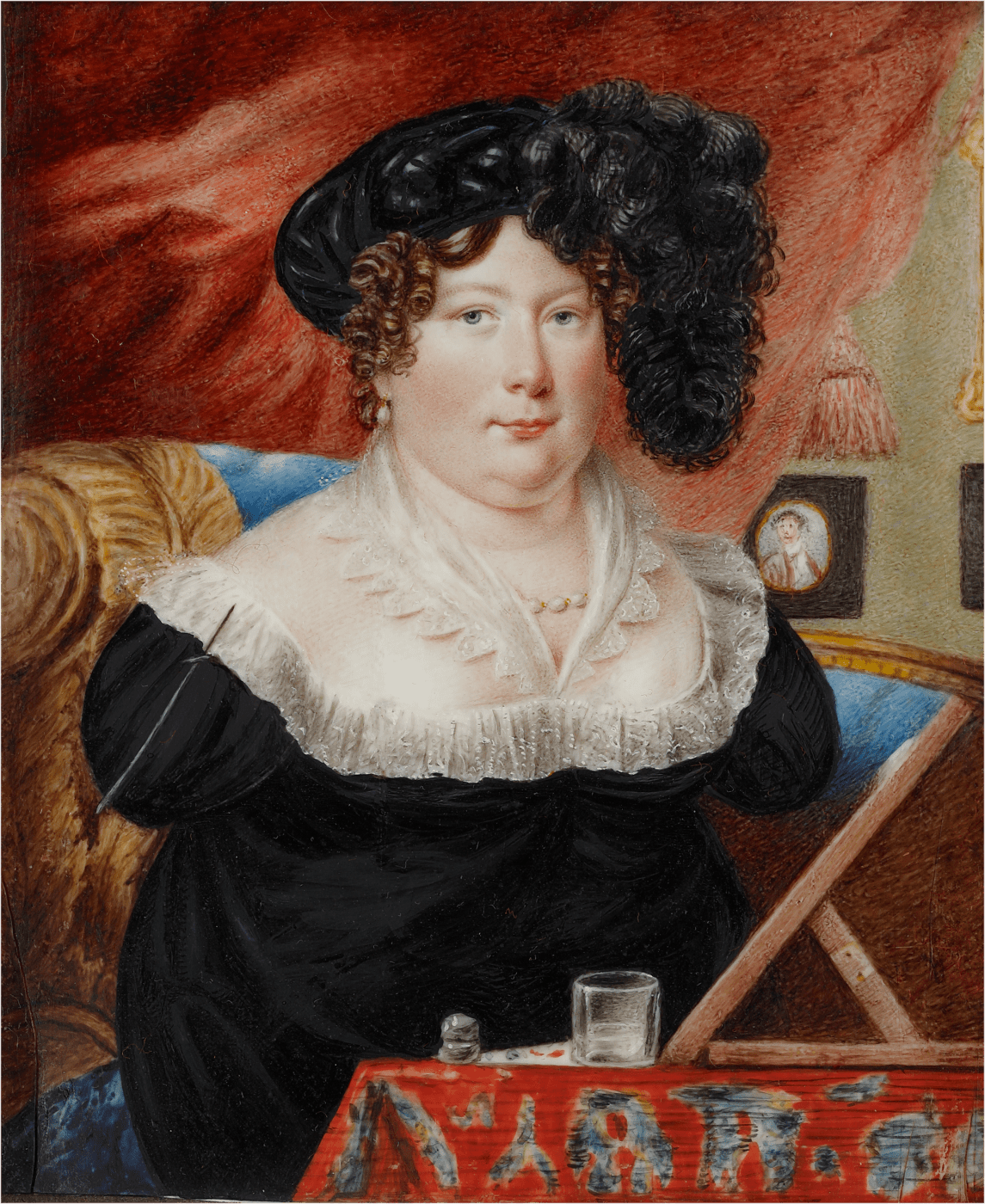The below blog entry was written by our researcher Ellie Smith, who co-curated last year's exhibition"Without Hands": The Art of Sarah Biffin, for the Archives and Records Association (UK & Ireland). Ellie introduces the life of an overlooked disabled woman artist, Sarah Biffin, and reflects on the importance of centring the disabled perspective when sharing past disabled lives with the public.
Above all, the premise of the exhibition began with a desire to uphold the voice of the artist. Our tactic was twofold. Firstly, rigorous research from the ground up: this involved looking further than the average exhibition might require - newspaper advertisements, pension lists, medical textbooks, contemporary novels, even folk songs. The most valuable resources were, without question, anything written or recorded by the artist herself. Collating and documenting anything produced by Biffin offered a genuine development in our knowledge and a corrective to the more dismissive or sensationalist accounts of her life and work. Her artwork and letters became the foundational structure on which the exhibition was built. Each section (six in total) began with a quote from the artist, foregrounding Biffin’s presence within all interpretive material. The artist’s self-portraits remained central to the display, and, thanks to the contributions of national institutions, every self-portrait produced by the artist was represented. Her self-portraits offered an invaluable insight into how the artist viewed herself, and how she wished to be viewed by others. All her life, Biffin’s appearance had been scrutinised by others and her disability was continually remarked upon by contemporaries. Through her self-portraits, Biffin took control of her own image and presented herself as a confident, professional artist.
Secondly, we recognised that we needed specialist knowledge beyond our area of expertise, and this required seeking the advice of someone with lived experience. This relationship formed the bedrock of the exhibition. We sought the help and advice of internationally acclaimed artist Alison Lapper who, like Biffin, was born with phocomelia. Lapper herself shared ‘I know only too well what it is like to be born without arms and hands and the obstacles that were in my way whilst striving to be an artist, not only as a woman but as a woman with a disability.’
Thanks to Lapper’s involvement, we were able to view archival documents, letters and artworks through the perspective of an artist with lived experience and this afforded Biffin’s writing, advertisements and self-portraits a new depth of meaning. During one conversation with Lapper, she candidly pointed out that the large hats worn by Biffin in self-portraits would have been impossible for her to paint in; as a result, Biffin emerged as a woman of formidable knowledge with an awareness of wider societal structures, who continually presented herself as a fashionable, respectable and, above all, professional artist.
Some may argue that the gulf between Lapper and Biffin reaches too broad a time scale to warrant any meaningful comparison. However, Lapper herself was ‘astonished at the parallels between [their] lives’ and pointed out ‘I’m still struggling now to break through the same barriers Biffin faced.’ This sense of pertinency highlighted the significance of certain issues, particularly regarding the display and interpretation of historic artefacts. For instance, if these issues are still relevant today, how do we display objects which contain harmful or distressing language and imagery? Can you ensure that the visitor will engage with any written or otherwise contextualising material? And how can a curator present objects in a way that disputes their harmful contents without negating the significance of their existence? These questions arose for us in a very prevalent manner when exploring the interpretation and presentation of artefacts which related to Biffin’s early career, specifically while she was exhibiting at county fairs. Biffin’s exhibitions were advertised via handbills and broad-sides which employed highly sensationalist language that would be deemed offensive today. The presentation of these objects required thoughtful curation and we undertook this challenge by physically separating this material from the artist’s work. This provided the viewer with the appropriate context and space required to understand the nuances of Biffin’s early career, without perpetuating or upholding the sensationalist rhetoric.
It was important to us to provide a diverse range of interpretive material that stretched far beyond the remit of standard ‘wall labels’. Although thoroughly researched and clearly written contextualising material remained crucial to the curation of the exhibition, we wanted to offer alternative modes of interpretation. This included video material (which would outlive the physical exhibition), panel talks (which provided a platform for contemporary artists), curators' tours (which delved deeper into the intricacies of the show’s curation) and an exhibition catalogue in which academics and specialists contributed contextualising essays with a full catalogue of all artworks exhibited.




